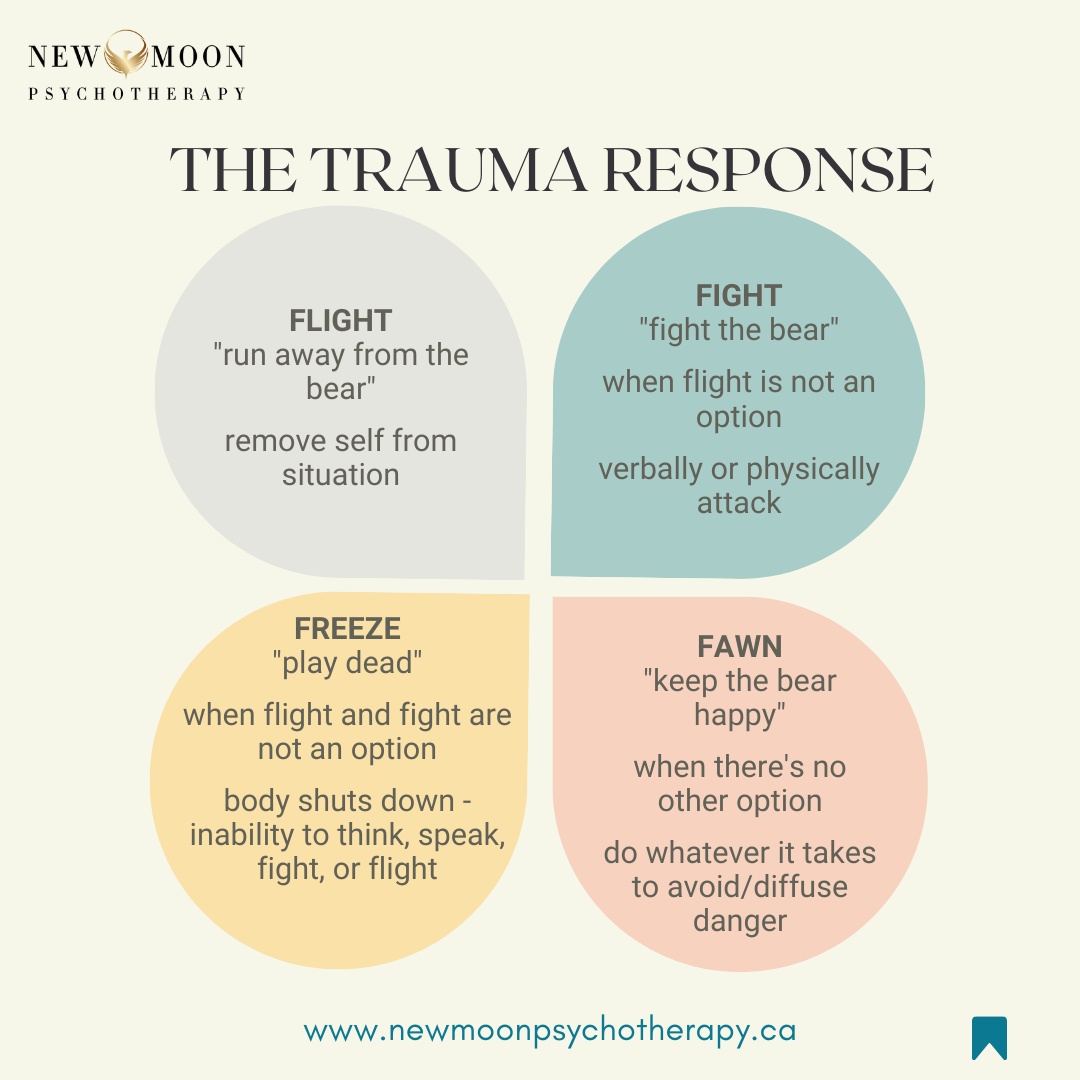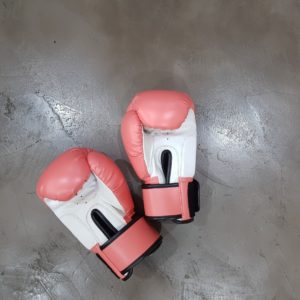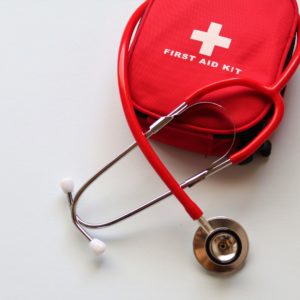Flight, Fight, Freeze, Fawn

Our bodies are fascinating. They have a built-in survival mechanism that is automatically set off when we are faced with danger. This is an incredibly intelligent system that in a matter of seconds assesses the situation and selects the most adaptive of four options – fight, flight, freeze, or fawn.
Each one presents itself differently in the brain and body.
This is also known as a trauma response.
The fight/flight system might sound familiar – freeze and fawn are a bit less known (and liked).
Let’s dive into each of these.
 Flight
Flight
The first of these four trauma responses is flight. This one sets off when our brain perceive that we have a solid chance to escape the danger. It’s the first and most desirable option because it gets us out of the dangerous situation and into safety with relatively low risk.
 Fight
Fight
Unfortunately, we can’t escape all danger. In those situations when we can’t run away, but we have the strength and resources to do something about it, we fight – whether it’s verbally by standing up for ourselves or physically by attacking.
Flight and fight are high energy responses and many people who experience these don’t experience much regret after using them. They might feel empowering and provide a sense of control. The freeze and fawn responses often bring up the opposite.
 Freeze
Freeze
Many trauma survivors report feeling angry that they froze. They see it as their mind and body betraying them and conclude that they allowed the trauma to occur. This couldn’t be more false.
When our bodies freeze, our brain determined that fleeing or fighting was not an option. That fight or flight could further jeopardize our safety. Perhaps the danger was too close, there was no way out, the danger was too big, or we didn’t have the resources to fight or get away. The nervous system made the life saving decision to freeze – to play dead. Sadly, this was the only thing that would work. We freeze because there’s no way out without making it worse.
 Fawn
Fawn
Then there’s fawn. Many people, even some therapists who don’t specialize in trauma, haven’t heard of this one but I promise it’s real. Fawn kicks in when we can’t flee, we can’t fight, and freezing wouldn’t cut it. So we befriend the danger, we do whatever it takes to appease the danger. We see this one most often in assault and abuse traumas. The survivor gives into the perpetrator/abuser. They give them exactly what they want – not because they want it, but to prevent the situation from escalating. To preserve their life.
Trauma responses are complicated. They are protective and essential to our survival, though sometimes we wish we chose another one. Ultimately, our body chose the one that it had to. Often survivors fight against the trauma response that they used in the moment. They ruminate on what they wish they did instead or how their actions enabled the event. Survivors don’t often pause to think how much worse it could have been if they tried to run or fight. If this is you, I encourage you to pause for a moment and reframe that your body and mind did exactly what was needed to survive.


